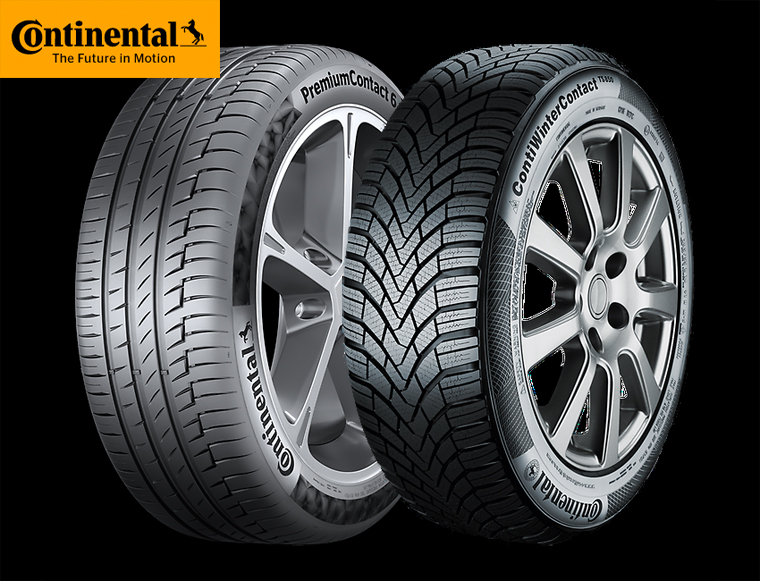Congratulations – you get it. If you’re taking the time to read this then the chances are you’re part of a small group of UK drivers that are aware that summer and winter tyres even exist.
For those readers that may be new to the concept of different tyres for different season, our latest tyre safety article explains not only what winter tyres are – and how they’re different to summer tyres – but also provide you with important tips on the right time to switch from one to the other.
How are winter tyres different to summer tyres?
In a nutshell, the main difference between winter and summer tyres – aside from the tread pattern design – is that they’re made from significantly different compounds. Summer tyres, like the ContiPremiumContact 5 and SportContact 6, are designed to optimally grip warm roads, while winter tyres are much better at gripping cold ones.
But before we delve further, it’s important to make something very clear. Winter tyres – while they do perform noticeably better in snowy and icy conditions than summer tyres – are not the same as snow tyres. Snowfall isn’t the main reason why northern European motorists fit winter tyres every year. While it’s true that they may get more snow than us, it doesn’t fall continuously between October to March, right?
So why do they do it? Simple. They switch to winter tyres because these work best at temperatures of 7°C and below, and perform much better than summer tyres in these conditions. As the recent winter weather has shown, we certainly get temperatures this low in the UK.
In fact, premium tyre manufacturer, Continental, believes that a far better name for “winter tyres” would be “cold weather tyres” – something they’ve been pushing for – but unfortunately this term isn’t as catchy.
It’s been a very long cold winter in the UK
There’s no denying it, this winter has been long and very cold – the coldest for quite a few years. And – even though the days are longer, and March has finally seen the days get a little warmer – we’re all still well aware of what 7°C and below feels like.
Why is 7°C significant? When it comes to tyres, this is the temperature when the performance characteristics between winter and summer versions crossover, with each tyre coming in to its own. When the ambient temperature consistently gets around 7°C or below, it’s important to have winter tyres fitted to your vehicle. But, as traditional Spring weather appears and temperatures start to rise, it’s time to start thinking about switching back from winter tyres to summer tyres.
But it’s important to stress that this switch should only be done once temperatures have consistently settled above 7°C, and any chance of a late cold blast have receded once and for all. Traditionally, this period is normally around the end of March or the start of April, but of course this depends very much on which part of the UK you live in.
Are there any consequences to switching too early, or too late?
Yes, absolutely.
If you switch back from your winter tyres to your summer tyres too early – and then experience a late winter blast – your tyres simply won’t be in an optimal position to keep you safe. Why? Because (as explained above) the compounds summer tyres are made from are not designed to perform optimally in such cold conditions. The compounds will be less flexible, and not grip the road surface as well in cold temperatures. And as a result, their driving characteristics – and thus their performance – will ultimately suffer.
And on the other hand if you leave the switch too late, you’ll have a different issue to contend with. Due to their special cold weather rubber compounds, winter tyres are noticeably less capable than summer tyres above temperatures of 7°C. They’re designed to warm up quickly in cold conditions, to give optimal effectiveness at low temperatures, but in a warmer climate this attribute becomes a burden and has a negative impact on several key aspects of tyre performance:
– Rate of tyre wear
– Braking
– Handling
– Fuel consumption
Talk to Asda Tyres for impartial, expert advice
If you’d like to know more about the benefits of switching from winter tyres to summer tyres, or want to learn more about which ones to switch to as the weather warms up, talk to the tyre professionals at Asda Tyres. We can offer you impartial advice, expert fitting solutions, and much more. Click here to live chat to one of our experts, or find your nearest fitting station.




